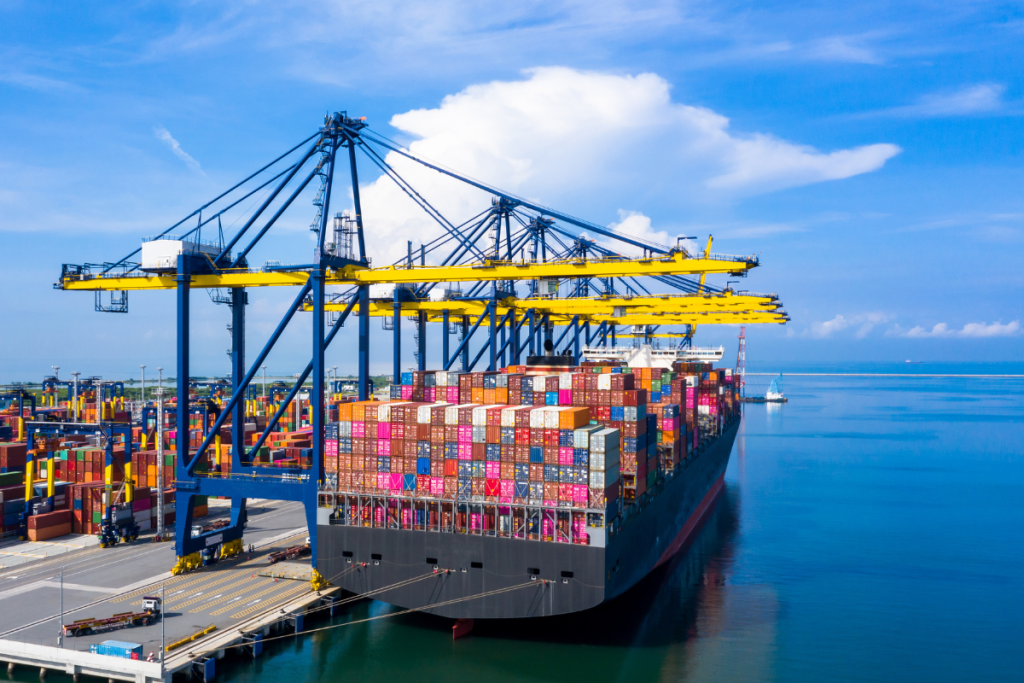Port delays are worsening across Northern Europe, with berth waiting times rising 77% in Bremerhaven, 49% in Hamburg, and 37% in Antwerp, according to new data from Drewry. Labor shortages, low Rhine River levels, and front-loaded trade flows are tightening capacity just as tariff volatility and early peak-season demand stretch global supply chains. For U.S. and Asian shippers, the ripple effects may soon show up in rate hikes and distorted inventory cycles.
Trade Policy Strains Port Capacity
Northern Europe’s major gateways are facing rising congestion at a time when global freight networks are already strained. New figures from Drewry reveal that average berth wait times have increased sharply across multiple ports, underscoring the impact of reduced labor availability and inland waterway disruption due to critically low water levels on the Rhine.
Adding complexity, recent shifts in U.S. trade policy are accelerating shipping activity. The temporary rollback of tariffs on Chinese imports, announced by President Trump, has incentivized earlier-than-expected transpacific shipments. That front-loading effect, combined with ongoing backlogs in Shenzhen, Los Angeles, and New York, is putting simultaneous pressure on both eastbound and westbound flows.
Maritime carriers are responding by introducing peak season surcharges and general rate increases, with implementation beginning in June. Drewry warns that stretched transit times are prompting shippers to build larger buffers, despite the cost implications, in a bid to safeguard availability amid worsening schedule reliability.
Meanwhile, uncertainty over the next round of tariff decisions is driving unpredictable swings in order volumes. Trump’s recent threat to impose a 50% tariff on European imports—now delayed to July 9—prompted a temporary rush to move goods ahead of potential cost hikes. For many freight operators, such unseasonal surges strain capacity in ways that static planning systems fail to anticipate.
Geopolitics Now Drives Freight Flows
Beyond the port gates, broader geopolitical disruptions are altering global routing patterns. Since late 2023, attacks on commercial vessels in the Red Sea have forced cargo ships to reroute around the Cape of Good Hope, extending voyage durations and intensifying port clustering effects at key entry points in Europe and Asia.
Hapag-Lloyd CEO Rolf Habben Jansen noted in a recent industry webinar that reintroducing Red Sea transits via the Suez Canal must be done gradually. A sudden shift back to standard routes risks overloading destination terminals unprepared for synchronized vessel arrivals.
At the same time, trade diplomacy remains volatile. A 90-day pause in U.S.–China tariffs is set to expire on August 14, creating further uncertainty for buyers considering restocking or reordering at scale. Apollo Management’s chief economist Torsten Slok points out that despite the temporary tariff relief, shipping volumes have yet to surge, raising the question of whether businesses are waiting for more durable policy signals.
Oxford Economics has cautioned that the cumulative effect of these disruptions is already acting as a drag on global trade. Export-heavy EU nations such as Germany, the Netherlands, and Ireland are especially exposed, with high trade-to-GDP ratios amplifying their vulnerability to transatlantic volatility.
Building Durable Flexibility
The congestion unfolding across Europe’s major ports is a reminder that global logistics are increasingly shaped by layered disruptions, where physical delays, policy swings, and inland constraints converge. In such an environment, tactical fixes offer diminishing returns. What’s needed instead is a more deliberate emphasis on upstream planning discipline. For supply chain leaders, this means integrating policy risk, routing volatility, and infrastructure fragility into forecasting models.








